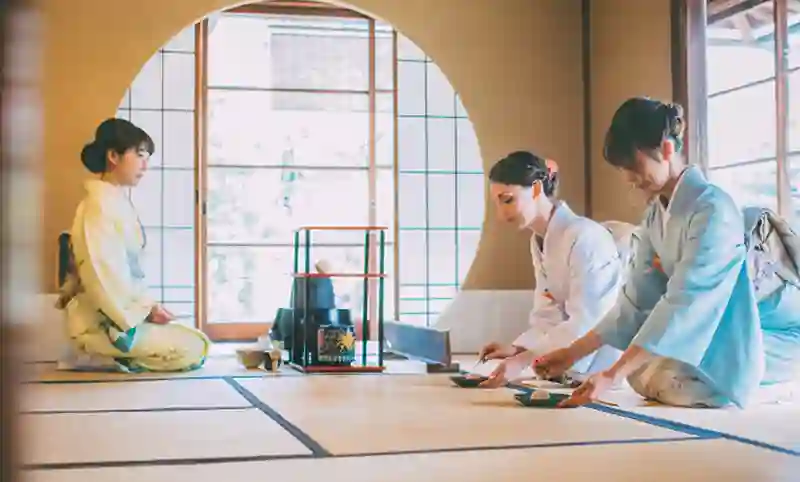A Brief History Of Matcha And The Japanese Tea Ceremony

Japan is famous for a great many delicious foods, sushi, sashimi, teriyaki, sukiyaki, gyoza, and more. In recent years it has also become renowned for one of its most time-honoured drinks, a flavour that can now be found in a wide variety of confections like ice cream, cookies, and cakes. Can you guess? We will give you a hint- it’s green!
You probably already know we are talking about matcha, the delicious Japanese tea that also tastes fantastic when mixed into sweets! Let’s learn more about this ancient and amazing tea!
Matcha’s story begins in neighbouring China. Before teapots became the popular way to steep tea leaves, the ancient Chinese ground their tea leaves into a fine powder which they then whipped or beat with a special brush into a bowl filled with hot water. While “beaten tea” went out of style in China in favour of steeped tea leaves, the Japanese turned the process literally into an art form.
In the early 12th century a Japanese Zen priest named Eisei was studying in the Buddhist monasteries of China and grew to love the slightly bitter, bright green drink. He brought living tea bushes and seeds back to Japan with him and it caught on quickly! Eisei adapted the Chinese “beaten tea” methods into a ritualized form of meditation he called “the way of tea”. The Japanese Buddhist monks eagerly embraced the practice and it soon spread all across the Japanese Isles.
Japan’s samurai class were among those who were captivated by “the way of the tea”, and made it a part of their daily ritual training. While the samurai were fearsome warriors, they also maintained a sense of culture and lived according to a code of unshakeable honour, self-discipline, and ritual purification based on the principles of Zen Buddhism. It was actually the samurai who developed what we now call “the Japanese tea ceremony” into the elegant, complex, and subtle art form it is today. Practising the tea ceremony became an integral component of samurai training designed to teach the warriors to sharpen their focus, improve their powers of concentration, and develop the patience to prepare them for the rigours and dangers they would face in battle. In addition to the positive mental effects of matcha, it was also a very heart healthy beverage!
The tea ceremony grew into one of Japan’s most important cultural traditions, with hundreds of meticulous steps, specific hand movements, and brewing and serving requirements. The ritual requires a properly designed tea room in a traditional Japanese garden where guests sit and sip the tea so carefully served to them in an equally ritualized manner requiring concentration and finesse. In addition to the tea and its drinkers, the items associated with the practise also became highly ritualized, with special teapots, ceramic cups, and brewing tools, all of which are designed for both function and form, making them truly beautiful works of art that also hold deep spiritual meaning to the participants.
The tea ceremony began as a spiritual practice, and the original principles of that practice, including tranquillity, harmony, purity, and respect are central to the tea ceremony that is still in practice and as popular as ever today.






